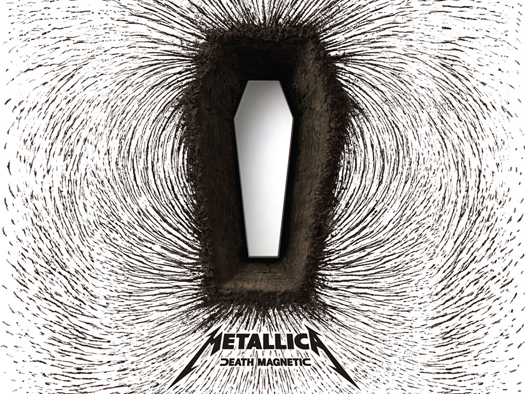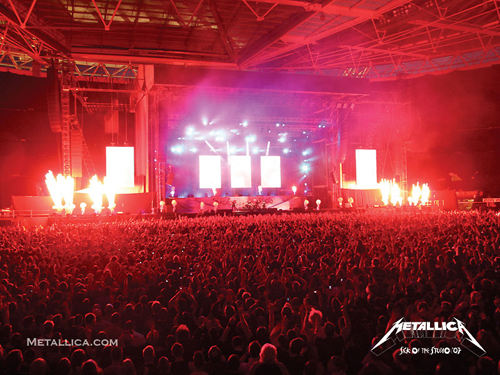When Metallica released their sixth studio album, Load, back in 1996, Drummer Lars Ulrich described Metallica as a band ”exploring different things.” This was Ulrich’s way of justifying what appeared to be a “sell-out” career makeover. With new hair styles, sophisticated clothing, and a more progressive rock sound, the story of Metallica was becoming sad but true. The next two studio albums, Reload (1997) and St. Anger (2003), only pushed die-hard Metallica fans farther from the band that taught them how to ride the lightning. Over the past few years we’ve seen Metallica chastise fans for downloading music, replace pickstyle bassist Jason Newsted with Suicidal Tendencies’ fingerstyle bassist Robert Trujillo, battle alcohol and addiction in Some Kind of Monster (2004), and win the Grammy Award for Best Metal Performance in 2004 for the title track, “St. Anger.”

Albeit recent triumphs one thing has remained elusive since the band took a Load back in 1996: an album that speaks to hardcore Metallica fans. A high octane blitzkrieg consumed by ferocious guitar licks and unrelenting vocals; reminiscent of the days when wearing a Metallica shirt was considered anti-establishment. Well folks, believe it or not, that album hit music stores on September 10th, and it’s called Death Magnetic. “Death Magnetic, at least the title, to me started out as kind of a tribute to people that have fallen in our business, like Layne Staley and a lot of the people that have died, basically – rock and roll martyrs of sorts,” James Hetfield explained about the album’s title back in July. “And then it kind of grew from there, thinking about death…some people are drawn towards it, just like a magnet, and other people are afraid of it and push away. The concept that we’re all gonna die sometimes is over-talked about and then a lot of times never talked about – no one wants to bring it up; it’s the big white elephant in the living room. But we all have to deal with it at some point.”
All white elephants aside, Magnetic is monumental for a number of reasons. It’s the first Metallica album to give all band members songwriting credits, and it’s also the first to be produced by the legendary Rick Rubin. Listed among Time Magazine’s 100 Most Influential People in The World in 2007, Rubin, who also co-founded Def Jam records with Russell Simmons, has worked with LL Cool J, Jay-Z, Weezer, Linkin Park, Neil Diamond, Tom Petty, Red Hot Chili Peppers, etc; and, like King Midas, everything he touches goes [at least] gold. Former vice president of A&R and marketing at Rubin’s American Recordings label in 1990, Don Charnas described why Rubin works so well with artists, “They love him. He shows them how to make it better, and he gets more honest and exciting performances out of people than anyone.” In March of 2008 Ulrich explained how “Rick’s big thing is to kind of have all these songs completely embedded in our bodies, and on D-Day, just go in [the studio] and execute them. His whole analogy is, the recording process becomes more like a gig – just going in and playing, and leaving all the thinking at the door,” which is exactly what Magnetic sounds like, a Metallica concert.
 |
 |
 |
 |
![ARTICLESIG[JUL08]](http://farm4.static.flickr.com/3014/2653697363_4c5cd6410a.jpg)
Please go to www.metallica.com for more spectacular pictures of Metallica.
You know you want it!

